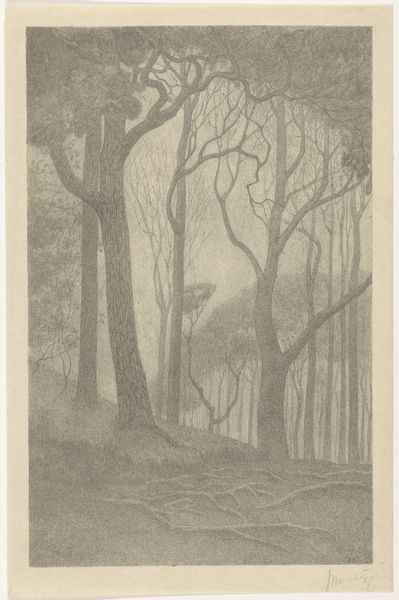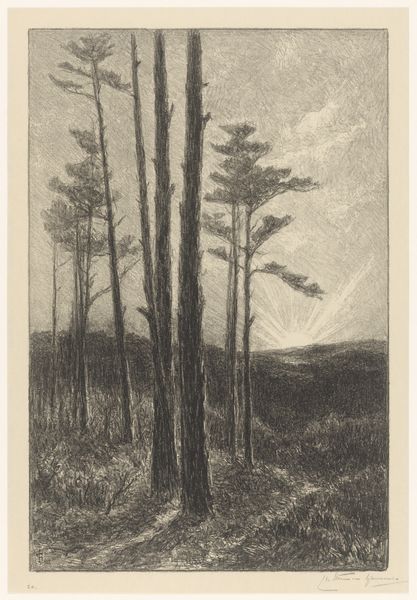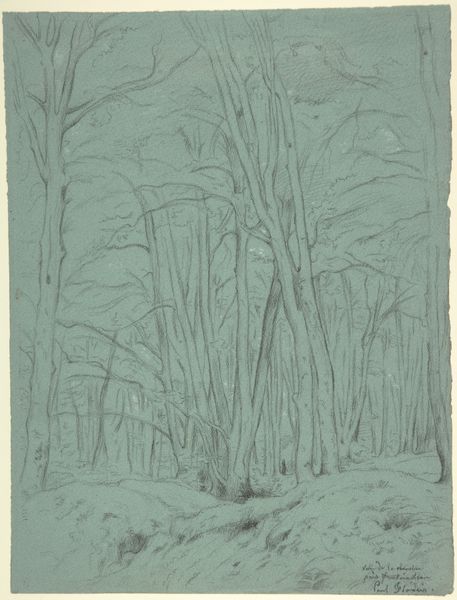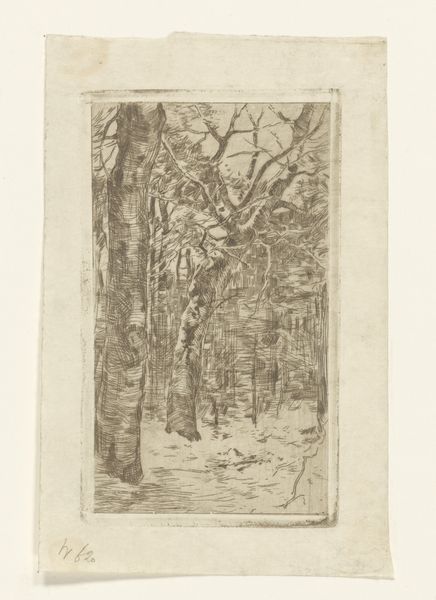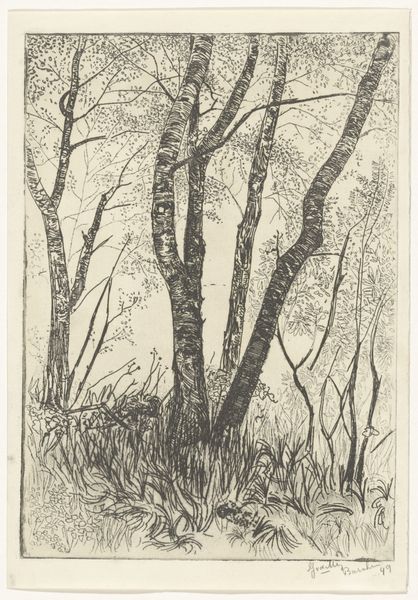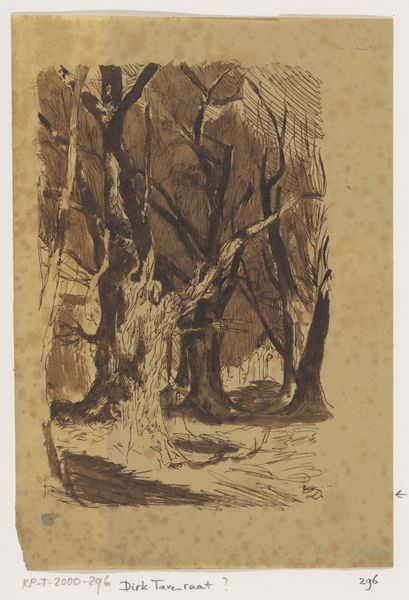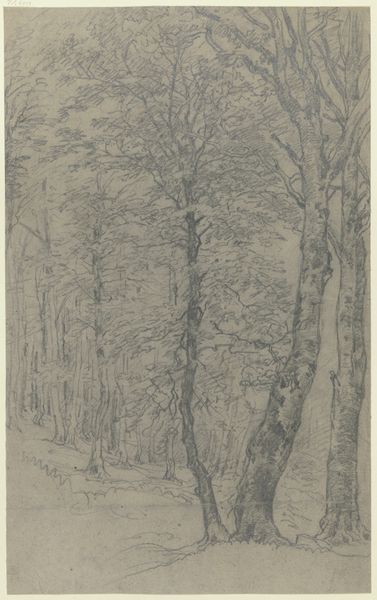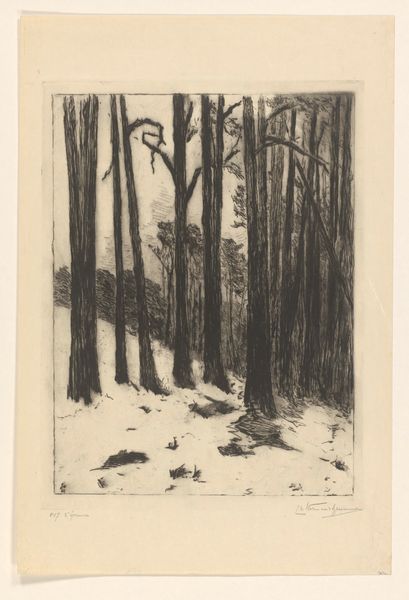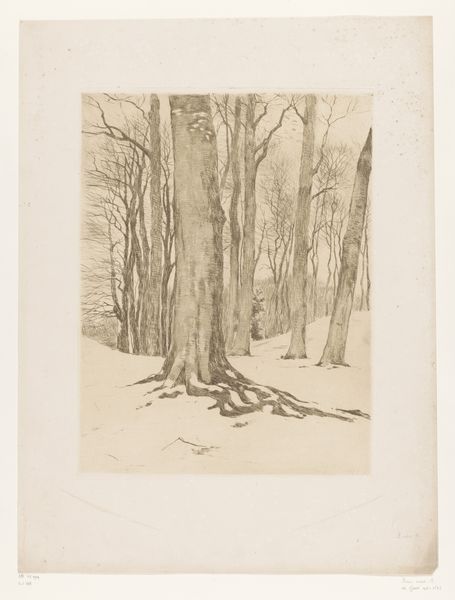
drawing, graphite
#
drawing
#
landscape
#
graphite
#
realism
Dimensions: height 208 mm, width 128 mm
Copyright: Rijks Museum: Open Domain
Editor: So, here we have "Bomengroep," or "Group of Trees," a graphite drawing made by Willem Witsen somewhere between 1870 and 1923. There's this really somber, almost mystical mood it evokes for me. How do you interpret the visual symbolism in this piece? Curator: What a beautiful question. Look at how the trees are rendered. Stark, yes, but also as silent witnesses. Consider the tree as an ancient symbol itself—rooted deeply in the earth, yet reaching for the heavens. What cultural memories are conjured when we see a group of trees represented this way, almost huddled together? Editor: You're right, it does feel like they’re sharing something, a silent solidarity perhaps. Does the drawing's style, realism, change how those symbols are received? Curator: Absolutely. Realism, especially in the late 19th and early 20th centuries, strove to capture the world as it was, free from idealization. These trees are not allegorical figures in some grand painting; they are trees rooted in a specific place. Yet, even in that direct representation, the cultural echoes are loud, speaking to human connection to the landscape and our complex emotional relationships with the natural world. Do you see how the artist uses shadow? Editor: Yes! It almost feels like the shadows are another character in the scene. Is that on purpose, would you say? Curator: It might be. Shadows are our hidden aspects; it may indicate those suppressed emotions that these "witnesses" keep as secrets. Editor: This drawing definitely sparked some new ways for me to think about realism and symbolism. Thank you! Curator: And thank you! I now have a greater appreciation for how this invites us into the silent dramas of nature and human relationships.
Comments
No comments
Be the first to comment and join the conversation on the ultimate creative platform.
